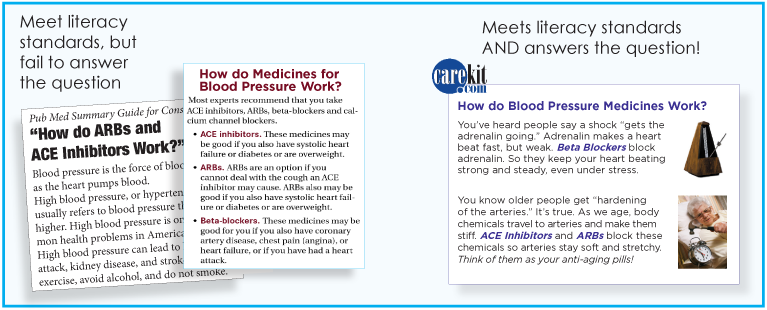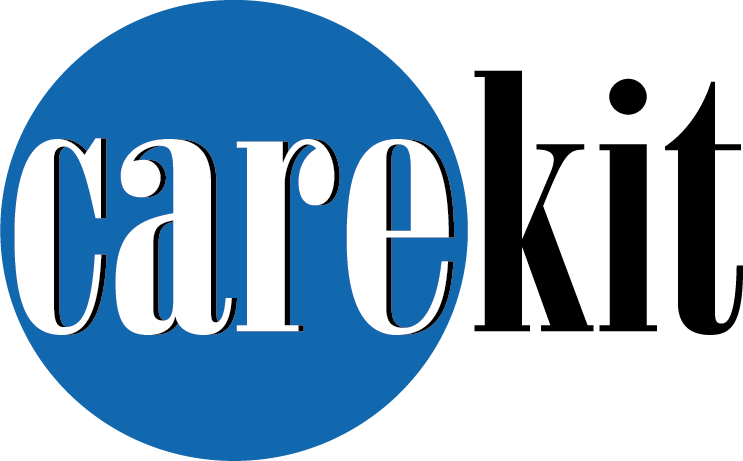![]()
IMPACT
Providers’ instructions are clinically correct. But accuracy alone is not enough. Ask yourself which of these two approaches has more impact.

![]()
INSPIRATION
Providers increasingly embrace health literacy. But understanding alone is not enough. Ask yourself which approach is more likely to inspire adherence.

![]()
SUSTAINABILITY
Providers now look to m-health for engagement. But mobility alone is not enough. The Care Kit curriculum, on line or on paper, keeps patients engaged long term.

What makes the Care Kit curriculum work? The PATIENT POINT OF VIEW. Providers have been victims of three failed approaches: Clinical accuracy, health literacy and mobility are not enough. What these three approaches to patient education have have in common is that providers wrote them, which means they reflect the PROVIDER POINT OF VIEW.
Care Kits use ethnography-observation of patients at home, at work and in the community-to find the PATIENT POINT OF VIEW. What difference does this make? Here’s one example, in how to organize self-care content:
TWO POINTS OF VIEW = Topics vs. Goals
 All professionals are trained to see in terms of topics. A topic outline for self-care lumps activities: Diet, exercise, sleep, medicine, stress relief. All medicines, for example, are discussed in one part. Providers may ask patients to set a goal for a topic, like an aspirational level of adherence under ‘medicine.’ Providers don’t realize topical “goals” are abstract, unmotivating, forgettable.
All professionals are trained to see in terms of topics. A topic outline for self-care lumps activities: Diet, exercise, sleep, medicine, stress relief. All medicines, for example, are discussed in one part. Providers may ask patients to set a goal for a topic, like an aspirational level of adherence under ‘medicine.’ Providers don’t realize topical “goals” are abstract, unmotivating, forgettable.
Patients respond to real goals as primary headings. A goal outline for post-MI will have three parts:
- Lighten the load on the heart
- Open up the arteries and
- Strengthen the heart
Topics are sorted as the means to these ends.
“You want to lighten the load on your heart, so here’s how.” All pills, for example, are not lumped together as one topic. Lasix is in Part One because diuretics lighten the load.
Beta Blockers are in Part Two because they open arteries.
The patient point of view is to know WHY before WHAT.
The provider point of view is defines WHAT and then WHY-although sometimes they neglect the “WHY.” Having covered the topics, providers often feel they are finished.
Same content.
Different approach.
Radically better results.
Care Kits have proven, over 20 years of clinical trials and case studies, to reduce readmissions by over 70%.

 Call it noncompliance, nonadherence, or just plain stubbornness—over 70% of patients do not follow self-care instructions from providers. Why? The reason is not obvious, since providers do many things right.
Call it noncompliance, nonadherence, or just plain stubbornness—over 70% of patients do not follow self-care instructions from providers. Why? The reason is not obvious, since providers do many things right.